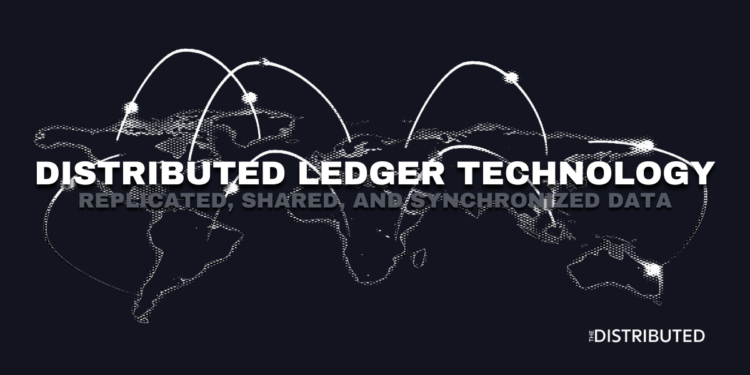Table Of Contents
What Is Distributed Ledger Technology (DLT)?
A distributed ledger is an agreement of replicated, shared, and synchronized digital data spread across multiple sites, countries, and institutions.[1]UK Government Office For Science – Distributed Ledger Technology: Beyond Block Chain A ledger is used to record the ins and outs of a system, allowing for complete traceability of transactions.
It is important to note that the term ‘blockchain’ and ‘distributed ledger’ are not interchangeable. All blockchains use distributed ledgers, but not all distributed ledgers use blockchain technology.
Distributed Ledger Technology (DLT) Explained
There are two main types of distributed ledgers; being permissioned and permissionless. The kind of ledger being used sets the protocol for who can and cannot validate transactions within a network.
A permissionless ledger is a decentralized public and shared ledger. Anyone who wants to join the network can do so, the best example being Bitcoin making public ledgers more decentralized. For the data on a decentralized ledger to be attacked, all copies distributed on the network must be attacked simultaneously.
While a permissioned ledger is a private and single ledger, anyone who wants to join the network can do so as long as they are approved before joining, making private ledgers more centralized. Due to their single point of failure, these digital ledgers are more prone to cyber-attacks and fraud.
However, a decentralized ledger is never under the control of a single entity. Through a network of participants called nodes, a copy of the ledger is independently updated through the set protocol every few seconds, ensuring all nodes are working from the same source of the truth. Once data is stored within the network, it becomes an immutable record.
All peers of a distributed ledger are seen as equal, with not one node having a more significant say in any decision-making. Instead, decisions are met through a general agreement called consensus. These consensus algorithms are nodes that verify and agree upon records posted on the ledger in real time.
DLT uses a set of mathematical algorithms called cryptography to ensure that all data is securely stored. Data can be accessed through a public copy of the ledger or cryptographic signatures called keys. Once data, such as transaction records, are stored within the system, they cannot be changed or deleted.
How Does DLT Track Data?
Distributed Ledger Technology tracks data by using blocks within a chain of blocks – hence the name blockchain. Blockchains contain a ledger of transactions between peers within the network. Each building block includes the previous block’s data within the chain which links them to each other. Every block being somewhat related to every different block secures the network. A malicious attacker would have to go back and change every block to get to the newest block to falsify a transaction.
How Is Distributed Ledger Technology Used?
Decentralized Use Cases Of DLT
Distributed ledger technology is utilized by blockchains for various use cases such as;
- Smart Contracts
- Decentralized Applications (dApps)
- Decentralized Finance (DeFi)
Centralized Use Cases Of DLT
The use of distributed ledger technology can allow for a central authority like governments and public sector organizations to minimize fraud, increase data security and streamline various processes[2]ConsenSys – Blockchain in Government and the Public Sector in industries such as;
- Central banks and financial institutions
- Financial services
- Government agencies
- Security and cyber defense
- Farming and agriculture
- Music and entertainment
- Supply chain management and delivery
- Data controls
- Mining industry
- Education
References



